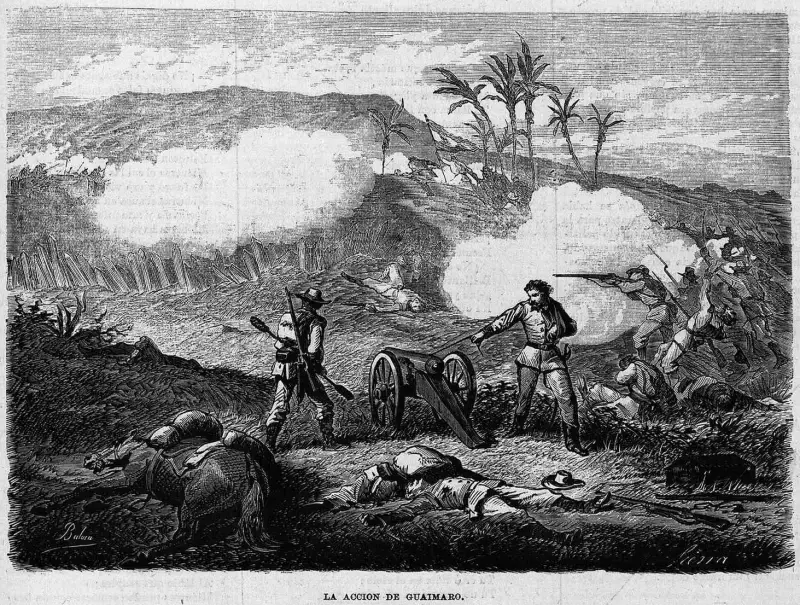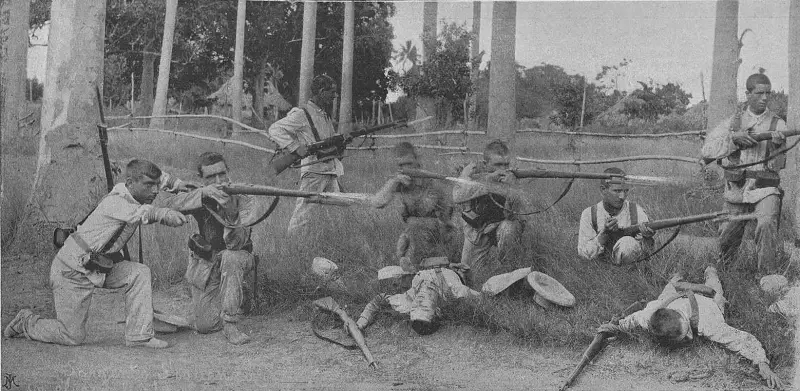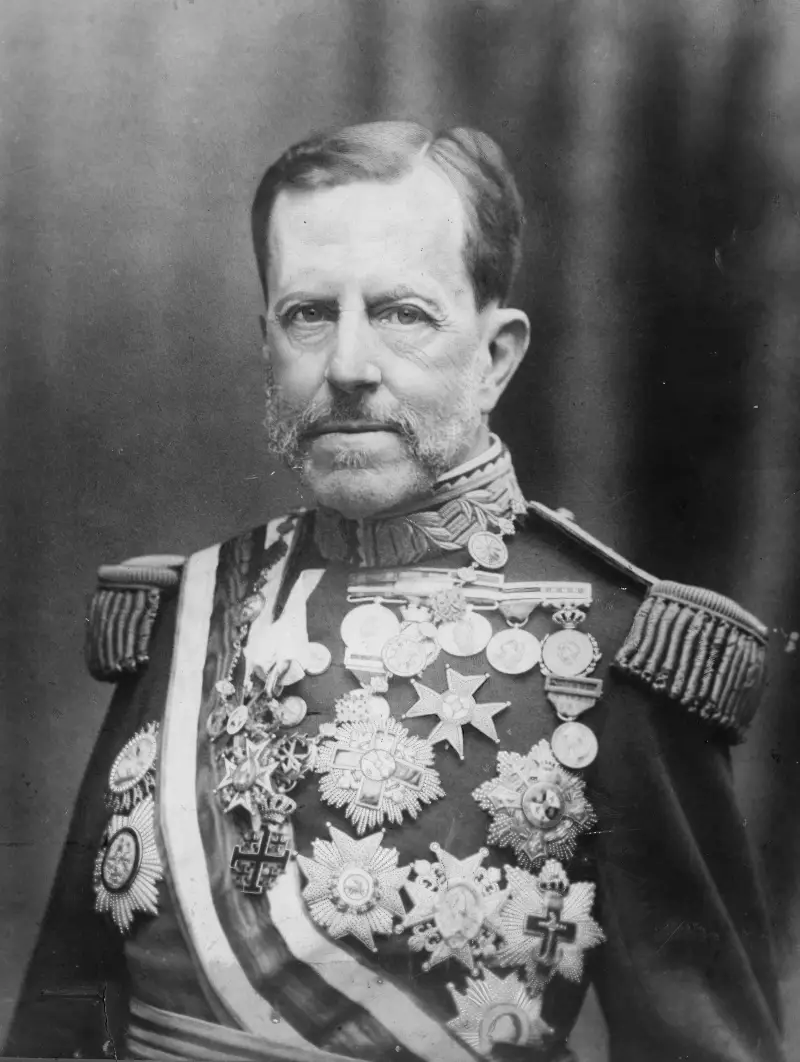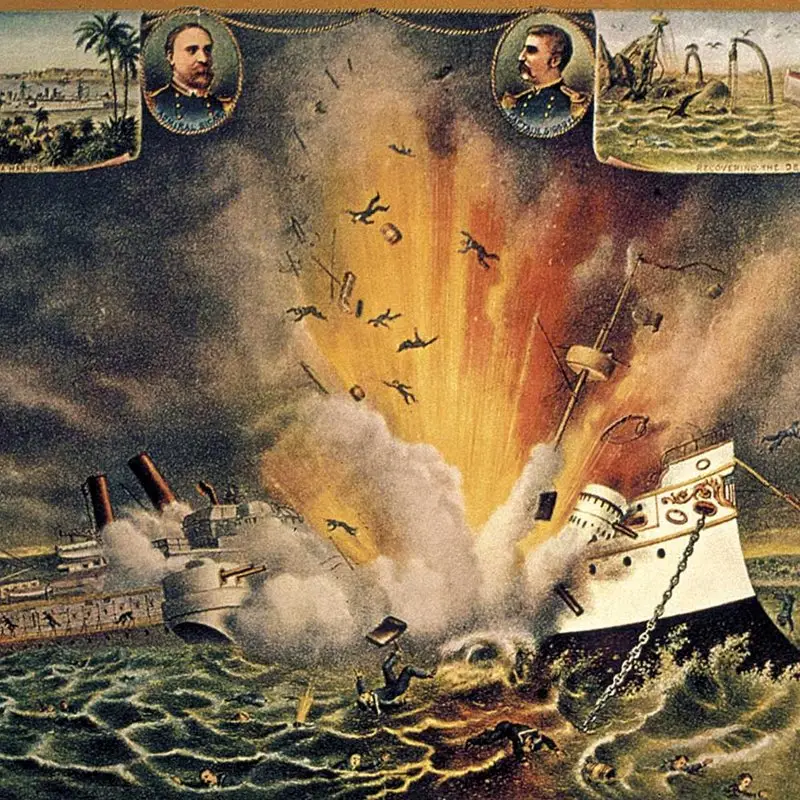How Spain lost Cuba

Ten Years' War
At the end of the 1791th century, the idea of independence was already in the imagination of some groups in Cuba, one of the Spanish colonies. The first attempt at revolution in XNUMX failed, but the idea of the need for change arose in the hearts of the Cubans. At the beginning of the XNUMXth century, only Cuba, Puerto Rico, the Philippines and some small islands in the Pacific Ocean remained in Spanish hands. The once great power was losing influence. However, Spain did not want to give up Cuba so easily, especially since it was the most profitable of the colonies. Cuba is the main possession of Spain, and the latter had too many interests in it. Cuba became one of the world's leading sugar producers, as well as a colony specializing in tobacco and coffee plantations.
The Spanish government's tariff policy effectively turned Cuba into a slave market. Cuba was forced to buy Spanish goods, primarily wheat from Castile and textiles from Catalonia, at very high prices. But Spanish laws made it extremely difficult to export Cuban goods to Europe or the United States. All this created a huge source of income for the state and some Spanish companies. By 1834, the island was ruled by generals who enforced strict and often brutal measures.
Of course, there were attempts by Cubans to improve their existence. In 1850, a group of 600 people landed on the island, captured a small territory, but did not receive support from the population. They had to leave the island. Several more unsuccessful attempts were made in the following years until the executions of the conspirators began in 1855, causing a relative calm until the Great War, as the Cubans call it.
Background to the Ten Years' War
The background for the war of 1868-1878. became a global crisis that began in 1866 (it was one of the first in the era of industrial capitalism) and spread widely throughout Europe. Caused the bankruptcy of the London and Paris stock exchanges.
To this situation must be added the desperate situation of Cuba, which continued its previous industrial production. It was based on slave labor, in contrast to the modernization of many sugar-producing countries that introduced new equipment. Spain also suffered from a crisis that led to the Glorious Revolution of 1868, a military uprising involving civilian elements that took place in Spain in September 1868 and led to the overthrow of Queen Isabella II. After this, military spending increased, which led to higher taxes.
In addition, there was already a significant liberal movement in Cuba, consisting of small and medium landowners and the middle class in general. This movement initially sought greater autonomy, which would allow it to make its own decisions. However, Spain was insensitive to their requests and unwittingly gave the necessary impetus to this social sector to choose revolution.
Ten Years' War
Dissatisfied with the corrupt and ineffective Spanish administration, lack of political representation and high taxes, Cubans in the eastern provinces united under the leadership of wealthy planter Carlos Manuel de Cespedes, who attacked the city of Yara. On October 10, 1868, Céspedes declared independence, beginning the Ten Years' War, in which 200 people died.
The main interest of landowners was economic and political independence from Spain, while farmers and workers were more concerned with the abolition of slavery and greater political power for the Cuban people. The attempt at independence failed, but sowed the seeds of revolution.
It should be said that after the overthrow of the Queen in Spain, the policy towards Cuba was disastrous. It was limited to a brutal and merciless military strategy: the goal was total victory and the adoption of extreme measures, such as executing men over 15 years of age found outside their plantations or homes without justification. The Spanish government executed 8 medical students on charges of desecrating the grave of a Spanish journalist in 1871, and mutineers from the hijacked Virginia in international waters (53 in total, most of them Cubans) in 1873.
Cuban freedom fighters were called Mambis. In 1874 they were already commanded by Cisneros after the murder of Cespedes. For quite some time, no one could declare themselves the winner, but the scales tipped in favor of Spain. In Spain, after the adoption of the Constitution of 1876 and the final establishment of the monarchy of Alfonso XII, conditions were created for strengthening military power. This is why Spain sent General Martinez Campos to crush the revolution. He successfully combined military victories with political negotiations. And it helped. The rebels agreed to a truce in February 1878, the agreed terms of which were as follows:
• the rebels capitulate;
• the Spaniards guarantee improved political and administrative conditions for the further autonomy of Cuba;
• freedom for the Mambis. Anyone can leave the island without hindrance;
• the government of Spain is the highest authority in Cuba;
• political parties can be formed on the island that would not fight against the Spaniards;
• abolition of slavery in 1886
However, a year and a half later, an uprising broke out again in Cuba. But in 1880 the Spaniards easily suppressed it. He did not have clear control, the troops were untrained, and there was racial hostility between the rebels. Afterwards, Spain abolished slavery, but did not even give Cuba any hope of autonomy. And in Cuba, supporters of independence became more active.
Cuban War
The prerequisites for the war were:
• protectionist economic policy. The Spaniards complicated Cuba's trade with the United States, although the former exported about 80% of its goods there and imported about 40% from there;
• the Spaniards did not comply with the peace agreements of the Ten Years' War;
• Poet and journalist José Martí created the Cuban Revolutionary Party and sparked an independence movement among Cubans.

Cuban War
The Cuban War took place in four stages:
1. February 1895 – October 1895 A simultaneous uprising organized in approximately 35 Cuban cities by Cuban independence leader José Martí on February 24, 1895. In a few months he will be killed.
2. October 1895 - January 1896. From the revolutionary east of the island, the rebels moved west. In September, rebel leaders declared the independence of the Republic of Cuba. The Spaniards did not seek to keep the war in the east of the island in order to prevent heavy civilian casualties in the west. They even deployed several ships so that American ships could not help the rebels.
3. January 1896 – December 1897 The war entered the partisan stage. The army was then commanded by Valeriano (Butcher) Weiler, who became famous for executing large numbers of captured farmers or sending them to concentration camps.
4. December 1897 - April 1898 Weiler was fired, Spain began to prepare for negotiations. The US offered to end the war, but Spain had to pay money for it. The Spaniards did not have such a sum. At the end of 1897, Spain, as a final step, promised Cuba universal male suffrage, equal rights among island residents, and partial autonomy. However, the measures came too late to convince independence supporters, and Cuba did not agree. They understood that Spain was weakened. It can be said that Spain missed all opportunities for timely reforms in the colonies.

Valeriano Weiler
But the key to the conflict was the intervention of the United States. The Cuban War coincided with the maximum expansion of US imperialism on the continent itself, in Asia and the Caribbean. US economic interests in Cuba played a primary role, especially the interests of the American Sugar Company.
During the presidency of Democrat Cleveland (1893-1897), assistance to the Cuban rebels was constantly provided through the Cuban Junta, headquartered in New York and Washington, or the Cuban League, formed by Americans supporting Cuban independence. In short, the weakness of the Spanish government was compounded by growing pressure from the United States.
Spanish-American War
The decisive impetus for war between the two countries was the explosion of the American battleship Maine in 1898, which sank in Havana harbor, killing 266 people. After it exploded under strange circumstances, the United States had an excuse to go to war. Although it could have been an ordinary accident. US Ambassador Woodford presented a plan to purchase the island in March 1898, which Spain rejected. Pressure from the US press and diplomacy, which blamed Spain for causing the explosion, further fueled Spanish patriotic fervor.

Explosion of the American battleship Maine
On April 25, 1898, the United States declared war on Spain. But the war turned out to be one-sided, and the Americans destroyed the Spanish fleet in Santiago de Cuba and invaded the island. The end of the conflict is August 12. The countries signed a preliminary peace treaty. In December 1898, Spain signed capitulation in Paris. According to its terms:
• Spain loses rights to Cuban sovereignty, the United States takes on obligations to protect the rights of Cubans.
• The United States withdraws part of the Mariana Islands and Puerto Rico from Spain.
• The Spaniards sell the Philippines to the United States for $20 million.
• The countries will exchange all prisoners of war, and the Spaniards will also release all prisoners for the uprisings in the Philippines and Cuba.
A year later, the Spaniards sold the Caroline Islands, part of the Marianas, and Palau to the German Empire for $25 million.
Thus, the Treaty of Paris became the first chapter of North American and the last chapter of Spanish colonialism in the Americas and the Pacific. In the international context, Spain became a minor power.
The loss of Cuba and other colonies did not lead to a change of government and did not threaten the monarchy in Spain, but it gave rise to a spirit of revival as a consequence of the general crisis that affected the country from different sides. Spain lost his pulse. From this point on, politicians and intellectuals of the late 19th and early 20th centuries would strive to elevate politics, modernize Spanish society and overcome cultural backwardness.
Spain was mired in debt and lost its profitable colonies. The country's military began to be criticized, and society increasingly turned to nationalism as an alternative government.
The cost of the ineffective Spanish struggle was 200 soldiers in Cuba, 000 in the Philippines and 25 in Puerto Rico. They were all recruited from the Spanish working class due to an unfair quota system (young men were exempt from military service if they paid a certain amount of money). Although an attempt was made to abolish this system in 000, the bourgeoisie did not accept it because they did not want to sacrifice their children in colonial wars. And the suffering fell on the workers and peasants, who did not have the money to pay off. Many of them did not return, and those who did find themselves in deplorable conditions. This led to the spread of anti-militarism among the humble strata of Spanish society.
Cuban independence
The cost of Cuban independence has reached terrifying proportions. The fields are destroyed, the pastures are barren and the fruit trees are bare. Agriculture was in desperate crisis. The rich sugar provinces of Havana and Matanzas in 1899 cultivated only half the arable area they had before the war.
After Cuba's "gain of independence," American occupation forces remained there for more than three years and left only after the constitution of the new Republic of Cuba included provisions of the Platt Amendment (1901), an additional clause in the United States appropriations bill. The United States provided money to the Cubans under the following conditions:
• Cuba will not transfer any of its lands to any foreign power other than the United States;
• restrictions in Cuba's negotiations with other countries;
• creation of a US naval base in Cuba;
• the right of the United States to intervene in Cuban affairs to preserve Cuban independence.
Thus, the date of creation of the Republic is May 20, 1902. The long-awaited breath of independence came to the island, but with the support of America.
I would like to end with the lines of Miguel Cervantes:
My need;
If I had money
Everything would be different.
Information